Growing Tips to Revive Your Potted Plants
Updated: Jul. 13, 2023
It’s summer and your container garden might be looking, well, not great. An expert reveals how to refresh (and keep growing) potted plants.
Give Your Potted Plants a Late-Season Refresh
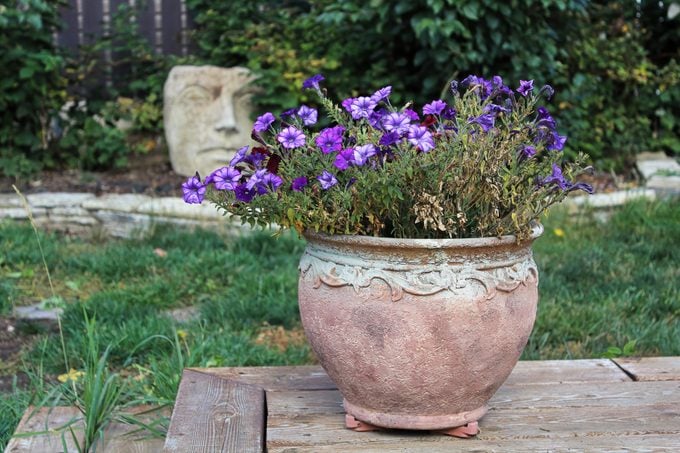
If you glance out the window in the dog days of summer and the potted plants you’re growing look a little lackluster, you’re not alone. Birds & Blooms horticultural expert Melinda Myers says this is quite common. Don’t worry. Here’s some reasons why your potted plants need attention. We also have some easy ways to put a little life back into your small space garden.
Learn how to grow a container garden for herbs.
Problem: Overcrowded Plants
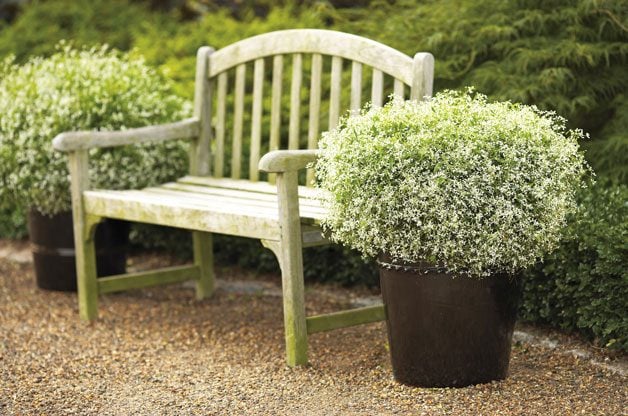
“By mid-season, some plants fade and get crowded out by more vigorous plants. The bigger ones take off and take over,” Melinda says.
Part of this is due to the instinct to pack as many plants as possible into one container when planting in spring. Of course, doing so provides instant gratification, but you’re not taking into account that these potted plants keep growing bigger, develop large roots in their pots and end up using a lot of space.
Grow potted flowers and plants that attract hummingbirds.
Solution: Try a New Container
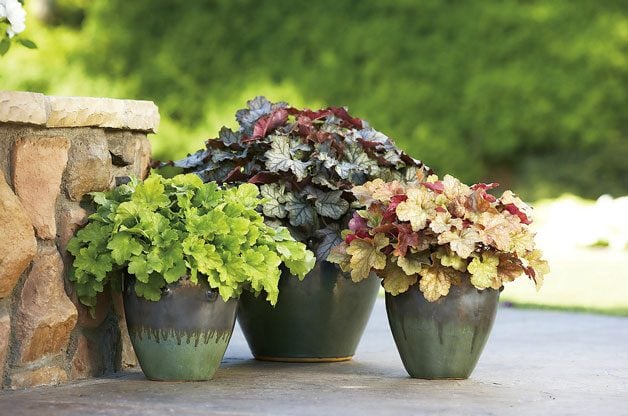
Freshening up your garden might mean adding a couple of fresh pots. You will probably find some good deals at the garden center this time of year. Placing a new container next to old ones can mask the unsightly parts of your spring containers. Plus, starting a few additional pots will give your green thumb an extra workout.
Problem: Too Hot and Too Busy
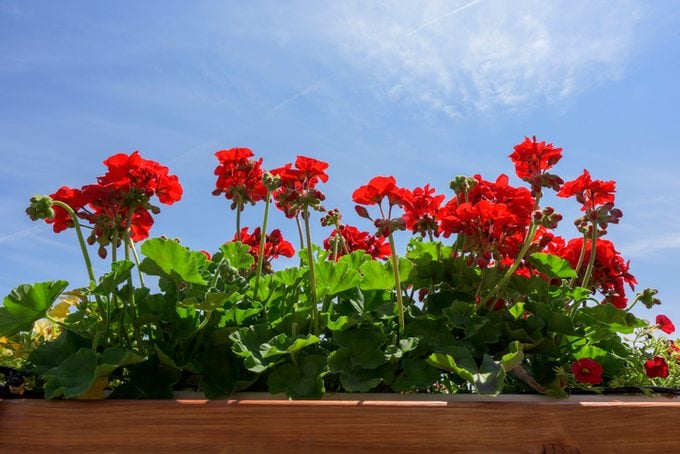
Another reason is lack of attention. By August, busy summer schedules may cause a lot of people to forget about their pots. This, combined with a mix of hot temperatures, can take a toll on potted plants. “A lot of plants thrive in warm, but not hot temperatures. When it gets hot, we need to water more often, but by midsummer, we’re not as attentive,” Melinda says.
Solution: Don’t Slack on Watering
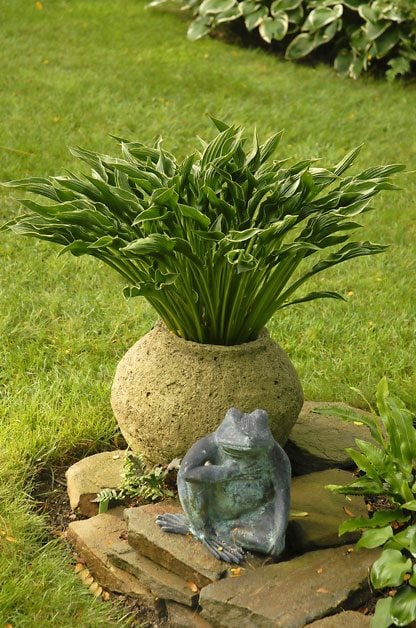
Those wilting, ragged plants will likely benefit from a little extra hydration, especially if you’re experiencing an extremely hot and dry summer. Here are a couple tricks to figure out if your pots are in need of a good watering.
First, simply lift the pot—if it’s really lightweight, give it a hearty drink. And second, stick your finger in the soil. It sounds so simple, but if the top few inches are dry, you’ll be able to tell right away that it needs a good soak.
Be generous with the water. It’s actually hard to overwater pots if you have proper drainage holes. Melinda says for best results, check the pots daily, water early in the day and check them again later. You might find they need a second helping of water.
The change in weather and increased temperatures can be brutal for potted plants, so staying on top of watering is a simple way to encourage plants to keep performing through the end of summer.
Get more tips for watering container gardens.
Problem: Behind on Maintenance
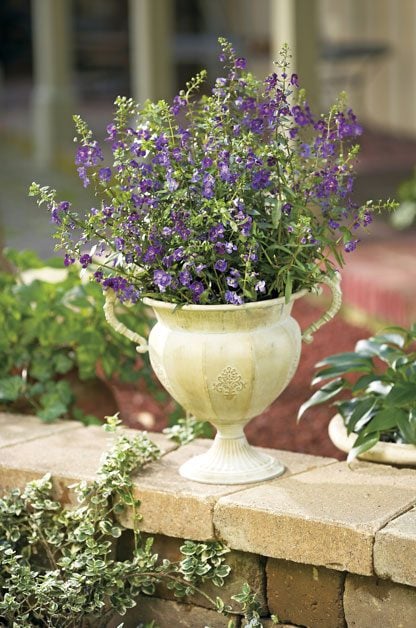
Ideally, plant grooming should be done throughout the growing season, but if you haven’t kept up with deadheading and trimming, it’s definitely not too late to start.
Learn how to tell if your plants need more sun.
Solution: Deadheading and Feeding
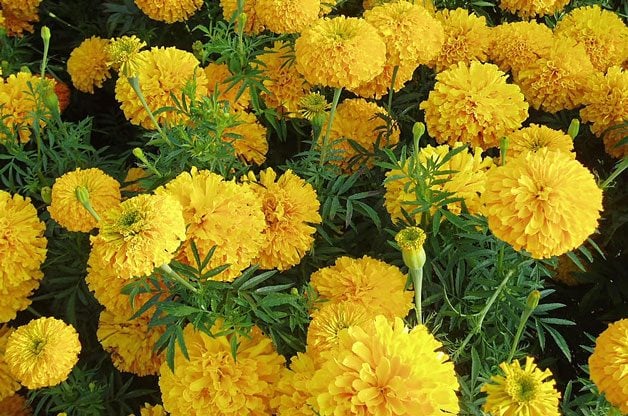
Your plants will still benefit from deadheading this late in the season, so it’s worth it to take the time to pluck off spent blooms now. Just the basics—trimming long, leggy plants, deadheading and pinching back the plants—can do wonders, even this late in the game.
The same goes for fertilizing annuals. Just because you haven’t kept up with the chore, doesn’t mean it’s too late. Some containers need it most in late summer if they’re expected to keep up the floral show. Give them a mid-season boost with slow-release fertilizer.
Grow these fall container plants for a pretty front porch.
Problem: Nothing Helps
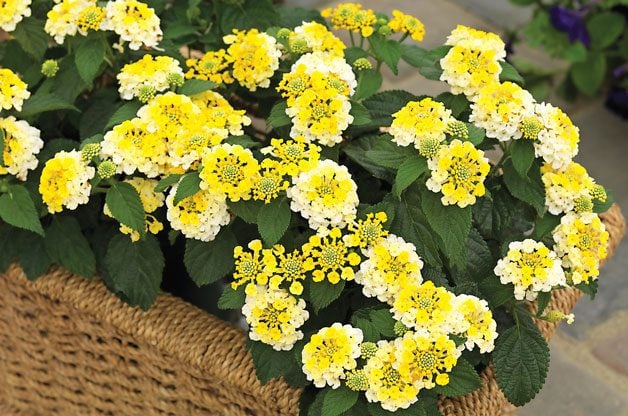
You might find that all of the watering, deadheading and fertilizing in the world simply won’t perk up your plants. There’s no shame in throwing in the towel, grabbing a trowel and carefully digging out under-performing plants and replacing them with new ones.
Check out the top 10 stunning summer flowers that bloom nonstop.
Solution: Add Fresh Additions
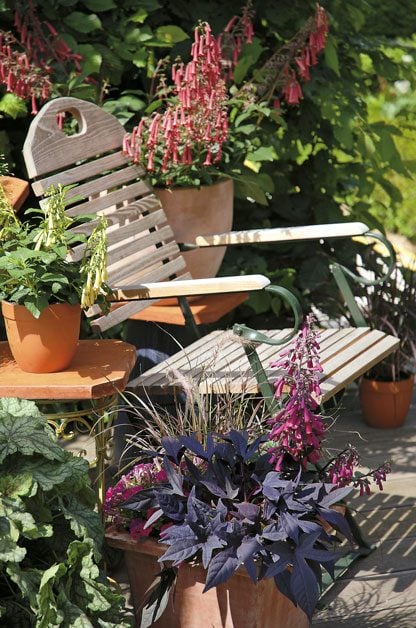
“If you’ve tried pruning and it doesn’t look like the plant is revivable, replacing it is a good idea,” Melinda says. But do this minimally and remove the old plant and its roots to allow space for new additions. Just be careful not to damage the roots of any remaining potted plants you’re growing.
While the garden center selection probably won’t be as exciting as when you first visited in spring, you’ll be able to find some healthy annuals to fill the empty spaces in your pots. Also look for ready-made containers. Plus, expect to get some great deals on a trip to the nursery in August.
“The plants they’re selling at this time of year are the ones that are going to thrive for the rest of the season,” she says. “Look for things like light, airy grasses. They can help fill in gaps and you won’t even be able to tell they were planted three months apart.”
Now is a good time to experiment with fun colors, like gold and purple, which are considered fall hues.
Even if you do all of these things, remember that it’ll take a week or two for your pots to perk back up. But you’ll be rewarded for your efforts with a beautiful late-summer container garden.
Next, learn why you should keep planting perennials in fall.
